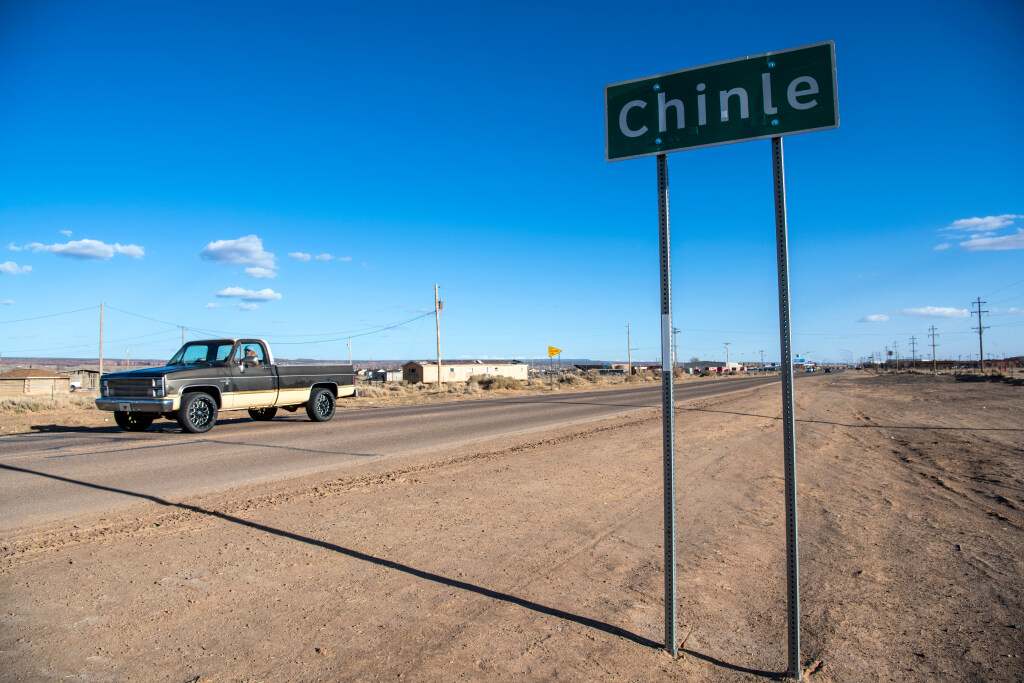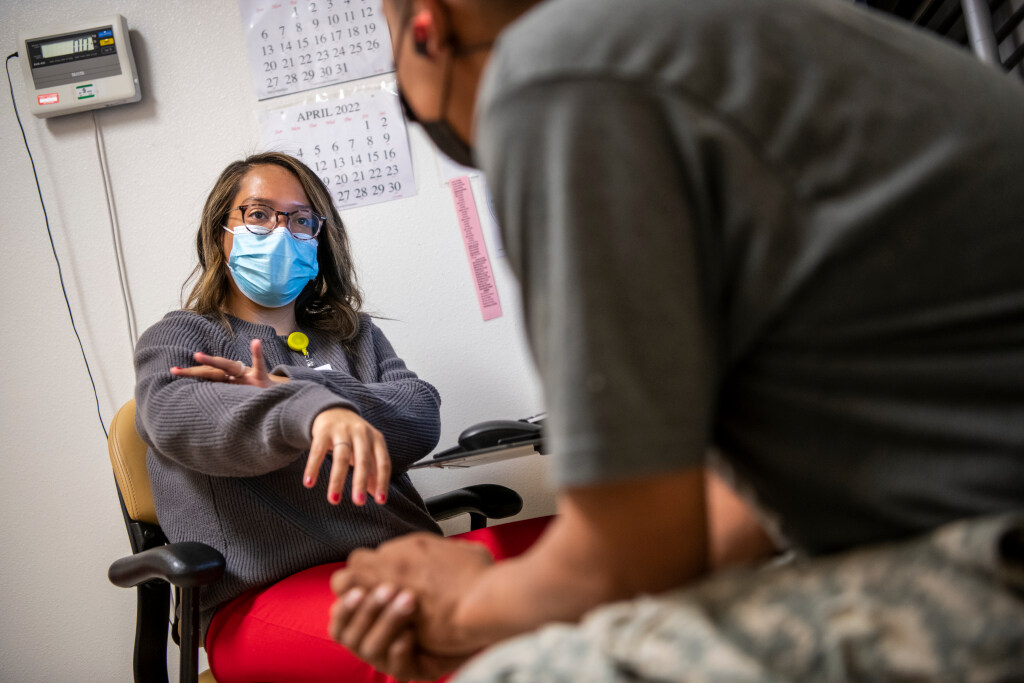A personal approach to health care in the Navajo Nation
The lessons Christina Knight learned at Ohio State have prepared her to make a difference in an unfamiliar setting.

Christina Knight has always liked the challenge of solving problems.
She even planned on studying to become a biochemist at Ohio State in part because of her love for trying to figure out something difficult.
Knight, however, learned as a freshman that she also enjoyed interacting with patients and their families while volunteering at The Ohio State University Wexner Medical Center. Those experiences made her want to practice medicine instead of work in a lab.
The change in career path led Dr. Knight to Chinle, Arizona, where she is using soft skills to help adult and pediatric patients cope with a variety of medical problems that beset the rural, poverty-stricken Navajo Nation.
“They’re dealing with a lot of issues in the Navajo Nation,” says Knight, who earned her Ohio State medical degree in 2017. “It can be access to resources or patient access to the hospital. Sometimes it’s even just that the medications available are very restricted because of where you are.
“To me, all of this always gets back to: ‘How do we solve this problem?’”
A combination of issues in the Navajo Nation — which stretches 27,000 square miles through Arizona, New Mexico and Utah — contributes to at least a third of its 400,000 citizens suffering from diabetes, heart conditions and lung disease.
“I want to get to know the people and see from their perspective. I always tell my patients, ‘You’re my greatest teacher.’”
While almost half of the Navajo live on the reservation, those residents have access to only 12 health care facilities, which together accommodate 200 hospital beds. That is one bed per 900 residents, about one-third the U.S. rate.
“Where you live impacts your health care, and this is a stark reminder,” says Knight, in the second of a two-year commitment to the HEAL (Health, Equity, Action and Leadership) Initiative, a fellowship program that places health care professionals in underserved communities around the world.
Knight tackles the macro problems by focusing on the micro level — her daily engagement with individual patients — while working at the internal medicine clinic at the Chinle Comprehensive Health Care Facility, located in the heart of the Navajo Nation.

“I want to get to know the people and see from their perspective,” Knight says. “I always tell my patients, ‘You’re my greatest teacher.’”
Knight’s personal approach to practicing medicine is much appreciated in the Navajo Nation.
“For our people, it is very important to have a health care provider treat them like a human and truly listen to them,” says Chinle resident Shaun Martin.
Knight listens and inquires to better understand circumstances. For example, she has learned that in the Navajo Nation — where poverty and unemployment rates are both at about 40% — it’s necessary to always ask patients if they have electricity and running water.
“Most of them don’t have either,” Knight says. “You have to take that into account when you’re making decisions about a lot of treatments. People in our society say, ‘If you’re going to be healthy, you have to do this, this and this.’ It’s not practical in Navajo Nation.
Listen to Dr. Knight’s story
“A big thing that I’ve learned is that you’re not here to be like, ‘I know better than you; we’re going to do it this way.’ It takes so much collaboration to yield a successful result.”
Knight credits her time at Ohio State for teaching her the importance of understanding cultural context. Her education abroad experiences included a summer in Guatemala — her first visit to her home country since Canton, Ohio, residents Susan and Jim Knight adopted her at 4 months.
“You need to have cultural humility,” Knight says. “You have to be able to step back and say, ‘I don’t know your traditions or cultures or native medical practices.’ Otherwise, you jump to conclusions.
“In medicine, you can start to tunnel your diagnosis or solution because you assume so much. When you do that, you shove everyone into one group. I feel like, if I assume anything, then I failed my patient. You have to keep a curious mind — that’s what I always tell myself.”
Knight’s open-minded, personal approach benefited Yeii Yazzie after the Navajo herb seller traveled 80 miles from his home on the Black Mesa in Arizona for a two-day hospital stay in Chinle.

“She treated me for dehydration,” Yazzie says. “I thought I was taking care of myself, but overall, I wasn’t. Once I talked to her, I understood. She communicated different things about dehydration that I never thought were an issue.”
Such communication also helps Knight better serve other patients — now and in the future.
“The way she practices medicine is being informed by the patients she’s seeing,” says Dr. Jane Goleman, who mentored Knight at Ohio State while teaching in the College of Medicine. “She’s in touch with people who have very little, and knowing how to interact with them as a physician is so important.”
Knight has enjoyed and learned so much in the Navajo Nation that she plans to practice medicine in global communities that face health care challenges once her fellowship ends in July 2023.
“I do love doing this,” Knight says. “In medical systems in low-resource countries, there’s definitely a different way of working, evaluating and treating people. I like thinking through and trouble shooting. There’s always a problem somewhere in medicine that you have to figure out.”